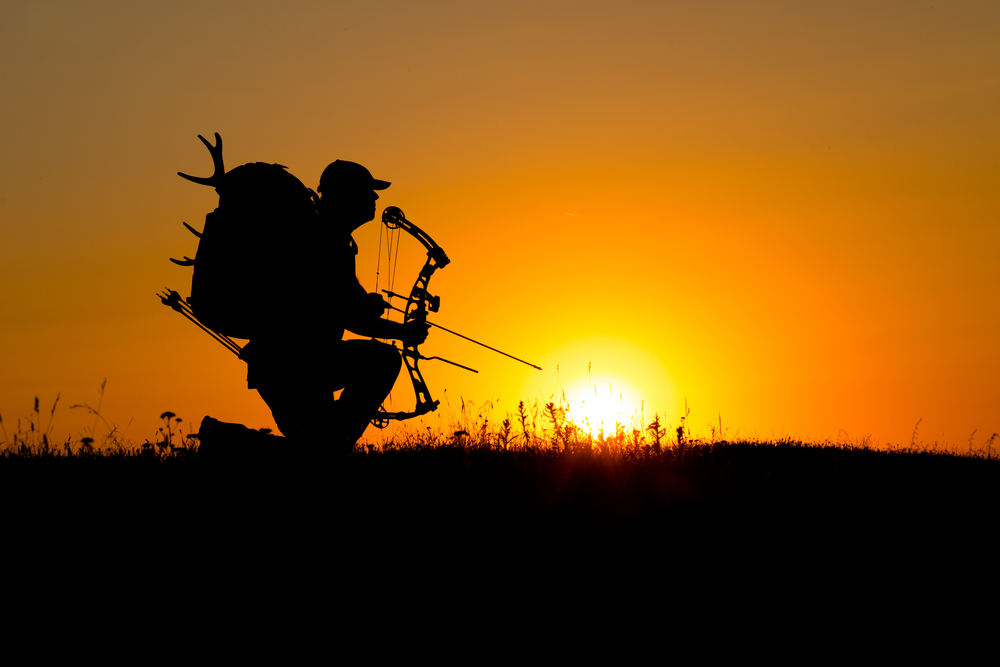Benefits of Using a Compound Bow
Compound bows are widely used by archers of all skill levels, and for good reason. Compound bows are versatile, used in both competitive target shooting and hunting, with design changes to help the archer in their event of choice. Compound bows include the most room and the easiest set up for adding accessories to help with your aim, making them a great choice for a beginners, intermediate or advanced archer. Some compound bows even come packaged with accessories already included, so you can get started with a full set up already in place.
Correct Stance When Shooting a Compound Bow
There are a lot of misconceptions about the correct stance and posture when starting out in archery. The first misconception? Obtaining a perfect form is unachievable, when it really just takes some practice to remain consistent. That being said, you can own all the fanciest equipment out there, but it won’t help your shot if your stance is off. Proper stance is the first step to perfecting your shot, and we’re here with some tips on how to stand to line up that perfect shot.
- Many beginners naturally tend to stand at a 90-degree angle toward their target, when they should instead be angled 45 degrees. This allows you to open your hips toward your target, creating an “open stance.”
- Keep your feet shoulder length apart and point your toes slightly outward.
- Make sure to accommodate your stance or your draw length for when you’re wearing baggier clothing, especially in the winter months. If your clothing interferes with your shot, your arrows will not fly straight.
- Try marking on the ground where your feet should be placed each time. You can use this guide over and over again until you are comfortable remaining consistent enough to go without it.
Accurately Aiming a Compound Bow
After you understand the stance, you should really focus on the fundamentals of how to shoot a compound bow, such as your grip, anchor, aim, release, and follow through. If you can concentrate on keeping all these steps consistent, you will see improvements in your accuracy in no time.
Grip
Keep your grip relaxed with a closed hand. It may feel more natural to keep a firm grip, but you don’t want to put too much pressure on the bow handle. This may lead to grabbing the bow mid-shot, a huge mistake when shooting for accuracy.
Anchor
When you are at full draw, you should rest the string on the side of your face, also known as anchoring. It’s all about finding spots you can consistently rest on with each shot, such as leaving your index finger on the corner of your mouth. A peep can help find a comfortable anchor spot.
Aim
Nearly every archer uses a bow scope, or a bow sight, to help with aim. You use bow sights to help line up the pins from the scope to the target at the right corresponding distance.
Release
The release, which may seem simple, can ruin a shot if not done correctly. Simply, the release needs to have no breaks, just one smooth, fluid movement. Any slight movement can veer a shot in the wrong direction. Remember to relax your fingers after you aim and let the bow do the work. Try using a release aid to help.
Follow-through
Keep your bow steady after firing. Practice not moving once you release the arrow. It is important to finish naturally and not exaggerate your follow-through.
Bow Hunter Tips for Shooting a Compound Bow
Once you have mastered the basic fundamentals, you should also incorporate more realistic scenarios into your practice. Let’s face it, you might start to feel really confident firing off shot after shot while your targets are completely stationary and you never really change up your shooting conditions. If you are looking to get into bow hunting, you know your targets are never perfectly presented right in front of you. Consider practicing in some different conditions.
Bow Hunting at Night
Whether it’s at night or in another low light setting, you should get accustomed to shooting targets where you may only be able to make out the outlines. When you are shooting at dusk, dawn, or even on overcast days with lots of tree cover, you will need to still line up your shot for the kill. Practicing on brightly colored targets during the day won’t prepare you for less than ideal conditions.
Add Some Pressure
You will never know how you’ll react once you find your first elk in front of you. Maybe you’ll suddenly forget everything you know about proper stance and aiming, and suddenly all your practice doesn’t seem to matter. To make your practicing more impactful, try adding some pressure, even if it’s an innocent wager with friends. Try finding 3D shooting tournaments to practice simulated hunting experiences.
Practice From All Distances
Sure setting your bow sights for clean distances seems easy enough, but what if your target is 37 yards away instead of your set 40? Start practicing from all distances so you know how to aim in any situation.
What Archery Accessories Do I Need for My Bow?
A compound bow’s design makes it easy to add on accessories to help you even further with your aim. It’s easier than ever to find a quality bow to start with, along with a large selection of add-ons. In fact, most pros who will help you out will likely assume you already have a full set up including peeps, sights, bow releases, and more. Still feeling unsure where to start? If you need help finding the right accessories, or help with how to set up your draw length and weight for you, contact your friendly archery pros at Specialty Archery. Ask us for more information on the right beginner’s compound bow set up.
